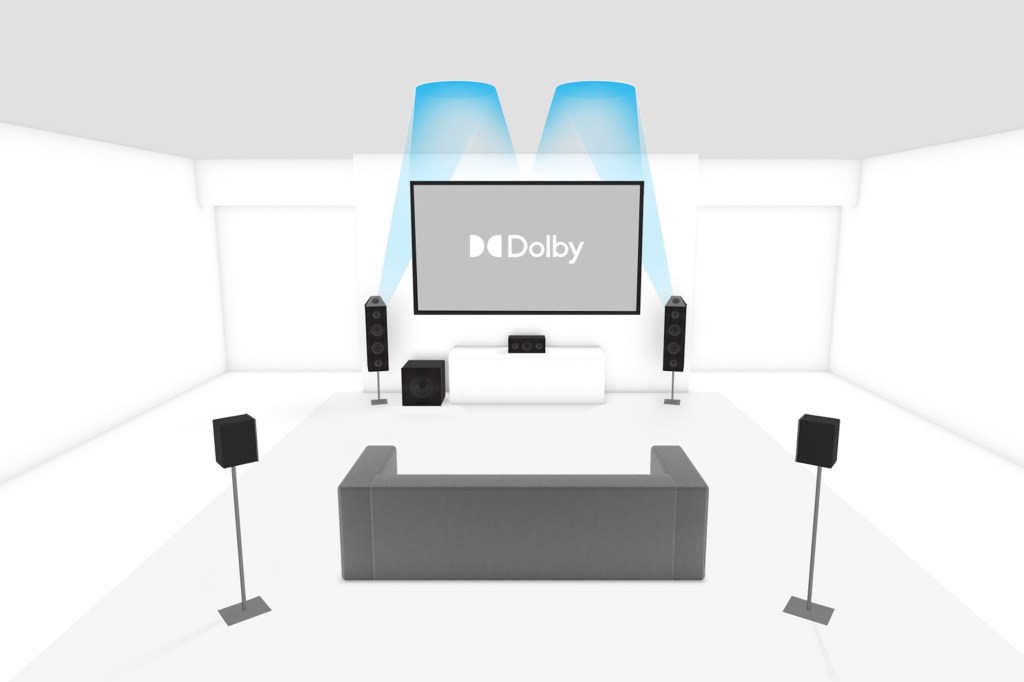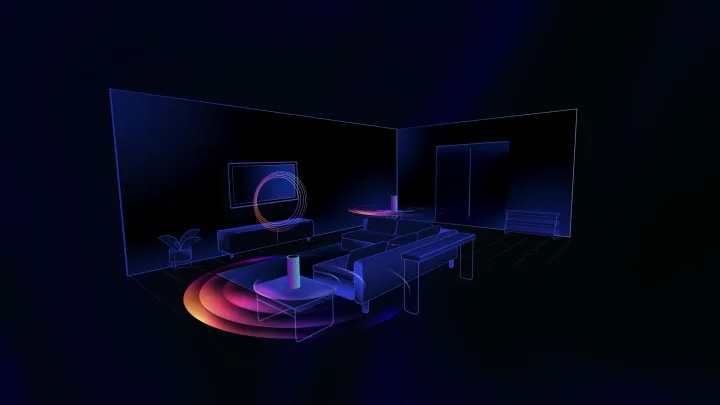If you’re an aspiring home cinema aficionado, the chances are you’re working on a Dolby Atmos set-up. But setting up a sound system often feels like a game of Tetris in your living room. You’ve got to work out where to put the top speaker system you’ve just bought – which is even more complicate when you’ve got to place them on the ceiling. But what if you could put the speakers anywhere, and with no wires at all?
Dolby’s latest brainwave, Dolby Atmos FlexConnect, is about to offer exactly that. The next generation of Atmos is set to jazz up your home audio experience with a big dollop of convenience. But what exactly is it, and how does it all work?
What is Dolby Atmos FlexConnect?
Dolby Atmos is a surround sound format designed to put you right at the heart of the action. As well as sound coming at you from left, right and centre, it also delivers overhead sound. It adds height channels to your conventional 5.1 or 7.1 setups, allowing sounds to not just surround you, but also to come from above. Usually, this means either getting an Atmos-compatible AVR or a soundbar like the Sonos Arc. Whatever your set-up, you’ve got to deal with mounting the right speakers (and the right number of them) in the right places for the full effect. It’s quite the headache.

Imagine that your speakers are no longer confined to the perfect spot. That’s basically what Dolby Atmos FlexConnect is. It’s the next generation of Dolby Atmos, promising the same thrilling surround sound experience, but with the freedom to place your speakers wherever you fancy. FlexConnect speakers can independently figure out where they are in a room, and adjust the sound accordingly for the surround sound effect.
But how exactly does it work?

Rather than placing speakers in specific locations, they work out where they are themselves. Each speaker in the FlexConnect ensemble plays its part by sending out test tones. These aren’t just random bleeps and bloops, mind you. They’re a crucial part of the setup, like a secret handshake between the speakers and your TV. Your TV, acting like a sound detective, listens in and figures out where each speaker is sitting in the room. Think of it as a high-tech game of Marco Polo, but with sound waves.
Once your TV has a mental map of the speaker layout, it moves on to the next clever thing. It takes this data and tweaks the audio output accordingly. If your speakers are behind the sofa, on the bookshelf, or even awkwardly perched on a window ledge, no worries. FlexConnect adjusts the sound so that it’s optimized for your room layout. It’s like having your own personal sound engineer, constantly fine-tuning the audio to make sure it’s just right.
Oh, and did we mention this next-gen Dolby Atmos setup is completely wireless? That’s right, you can forget about those unsightly cables snaking around your living room. FlexConnect liberates you from the tangle. Just power up, connect, and you’re good to go. This is a far cry from existing systems that either need a soundbar wired to the TV or a separate transmitter box.
However, FlexConnect uses your TV as the central audio channel. Traditionally, TV speakers haven’t exactly been the stars of the audio show (to put things nicely). But since your telly does much of the heavy lifting here, the new audio standard has to work through it. You might be able to work around this, by switching your TV’s audio output to a separate speaker plugged in. Or, you might need to wait for FlexConnect to catch up to an audiophile’s set-up.
What devices work with FlexConnect, and when is it available?
So far, we know TCL and Hisense TVs will be the first to boast this tech, with more brands likely to jump on the bandwagon. Chip giant MediaTek has also said FlexConnect is being integrated into its smart TV chips, so expect future TVs to support the feature. We’ve also not seen any speaker announcements, so expect these at a later date. Keep your eyes peeled for more updates, especially as the year goes on.
These TCL TVs will be rolling out later this year, so we know that FlexConnect is going to launch in 2024. But as to exactly when you’ll be able to get your hands ears on it, remains to be seen.




0 Comments
If you have any doubts, Please let me know